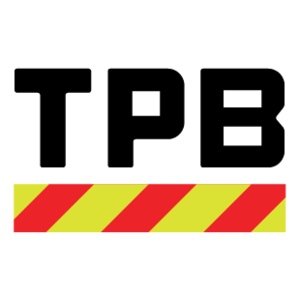The Goal Of Every MOT Crew!
IF YOU OWN A ROAD CONSTRUCTION COMPANY THEN THE FOLLOWING WILL SOUND FAMILIAR. YOU ARRIVE AT YOUR OFFICE/WAREHOUSE AT 5:00 A.M. ON MONDAY MORNING. AS YOU TURN THE LIGHTS ON IN THE WAREHOUSE YOUR FIRST CREWS SHOW UP FOR WORK. THESE CREWS ARE YOUR MAINTENANCE OF TRAFFIC (MOT) CREWS.
They quickly load the beds of their company pick-up trucks with:
Road work signs.
Sign stands.
Traffic cones.
The traffic control manager of each crew comes to you for the MOT plans. Then they all head to their job sites.
IMPORTANCE OF MOT CREWS
As the owner of the company, you are aware that the Maintenance of Traffic crews are an integral part of every roadwork project! The MOT crew is responsible for setting lane closures (creating the work zones) keeping the roadway safe for both the traveling public (motorists) and the road workers.
PROTECTING YOUR MOT CREWS
You’re happy that you have the work-load to keep your MOT crews working 6 days a week. However, you also know that you are sending your crews out to perform one of the most dangerous jobs in America…Temporary Traffic Control! In 2019, 842 workers were killed and 39,100 were injured in work zone crashes (National Safety Council).
You often think, how do I protect my MOT crews…how do I make their job safer!?
Invest in their training.
Tool box talks on safety while working in the roadway.
Instill a safety mindset in your MOT crews.
Ensure they wear the proper ANSI Hi-Vis safety apparel.
Educate the public on how to safely approach and navigate through a work zone.
Even though there’s a lot of time and money invested in road-worker safety and public awareness, we know that accidents do happen. Thus, the question remains, what can be done to make maintenance of traffic safer for the crews?
To make the job of Maintenance of Traffic safer, we need to look at which duties our MOT crews are performing when they’re in the most danger of being struck by a motorist. They are:
Setting the Advance Warning Signs (with stands)
Setting the Flashing Arrow Panel or the Flagger in the closed lane.
Setting the traffic cones or drums to create the Work Zone.
ADVANCE WARNING SIGNS
While your crew goes to set the advanced warning signs in place they have to stand behind or at the side of the truck as they fumble to find the right sign for the location. Then take time to dig out the sign stand from under the traffic cones. On average, each sign takes approximately 2 minutes and 30 seconds to install. This is 2 minutes and 30 seconds with no protection from on-coming traffic. That’s 2 minutes and 30 seconds of traffic zooming by at 50 to 70 mph is all it takes, at those speeds, is one distracted driver to cause disaster.
The risk of getting struck while setting up signs can be greatly reduced by:
Being seen (increasing your visibility to motorists)
An organized truck bed. Knowing which signs are which…easy accessibility.
Easy accessibility to the sign sands.
FLASHING ARROW PANEL/FLAGGER
While setting the Flashing Arrow Panel or Flagger, our MOT has the same challenges of not being seen. Setting the Flashing Arrow Panel and Flagger both take approximately 2 minutes. To drop a Flashing Arrow Panel, the crew needs to unhook it from the truck. Drop the outriggers. And, sight the panel. Yes, during this operation, the arrow is flashing to alert drivers to move over a lane but the crew is still exposed with minimal visibility.
If you’re dropping off a Flagger, your crew is exposed, unprotected for 2 minutes. The Flagger has to dig out both the paddle and the handle from the truck bed. Once assembled, the Flagger can begin his duties of controlling traffic.
To make this step of the MOT process safer, we can:
Be seen (increase the crews visibility to motorists)
Keep the truck bed organized so the Flagger can easily access their equipment.
Transport the STOP/SLOW paddle already assembled.
TRAFFIC CONES: SETTING THE THIN ORANGE LINE
Where our MOT crews have the most exposure is setting the traffic cones to delineate the work zone! Our MOT crews are exposed to speeding traffic every second they’re setting the cones or drums. The duration of this exposure all depends on how long the work zone needs to be. The longer the work zone the longer your crew is exposed.
Walking to the lane marking to place a cone puts our MOT crews, sometimes, only inches from speeding vehicles!
SOLUTION
As you can see, all three main duties have the same pain-points. Being seen. Being organized. Being too close and exposed to speeding motorists. Is there a solution to these perils?
We believe there is. Contact us to today, and learn more about how a handful of traffic control professionals are changing the way Maintenance of Traffic is done!

